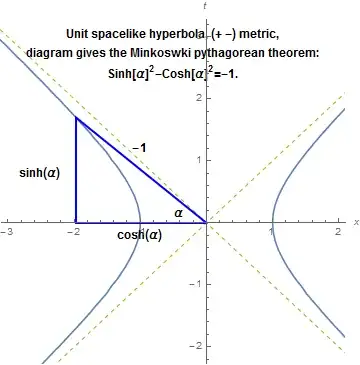The SR invariance formula makes space-like intervals imaginary (e.g., the distance $x$ in a given frame has interval $ix$). Yet modern physicists consider it bad form to define the distance itself as $ix$, as Minkowski did. It seems to me that this distinction is trivial—what’s wrong with defining the distance as the value of its interval? An answer to a previous question of mine on this topic referred to a paper by Visser showing that there is a way to do this that can be generalized to GR. So what’s the fuss about? Even if there weren’t such a way, I don’t see how that would invalidate Minkowski’s definition for SR. Since the interval measure is what’s important, what fundamental difference can it make whether one defines the distance as x or as the imaginary interval $ix$?
The whole idea of a LT being an imaginary rotation (important, because phi is additive) depends on the use of the invariant measure, which is the complex length between two points in C2, the space in which complex rotations exist, and so the space in which the x-t plane is being considered to be embedded when we talk of complex rotations. In C2 it can easily be shown that the angle between any two axes, real or imaginary, is a real right angle, and this explains the invariance formula—it is simply the Pythagorean theorem for that complex triangle. So all this ‘invariant interval geometry’ is an integral part of special relativity. If you insist that distances are real and use a Pseudo-Euclidean metric, which would imply entirely different values for these angles, you are throwing out an enormous portion of SR. It is hard to see how that can be billed as an advance in our understanding.
